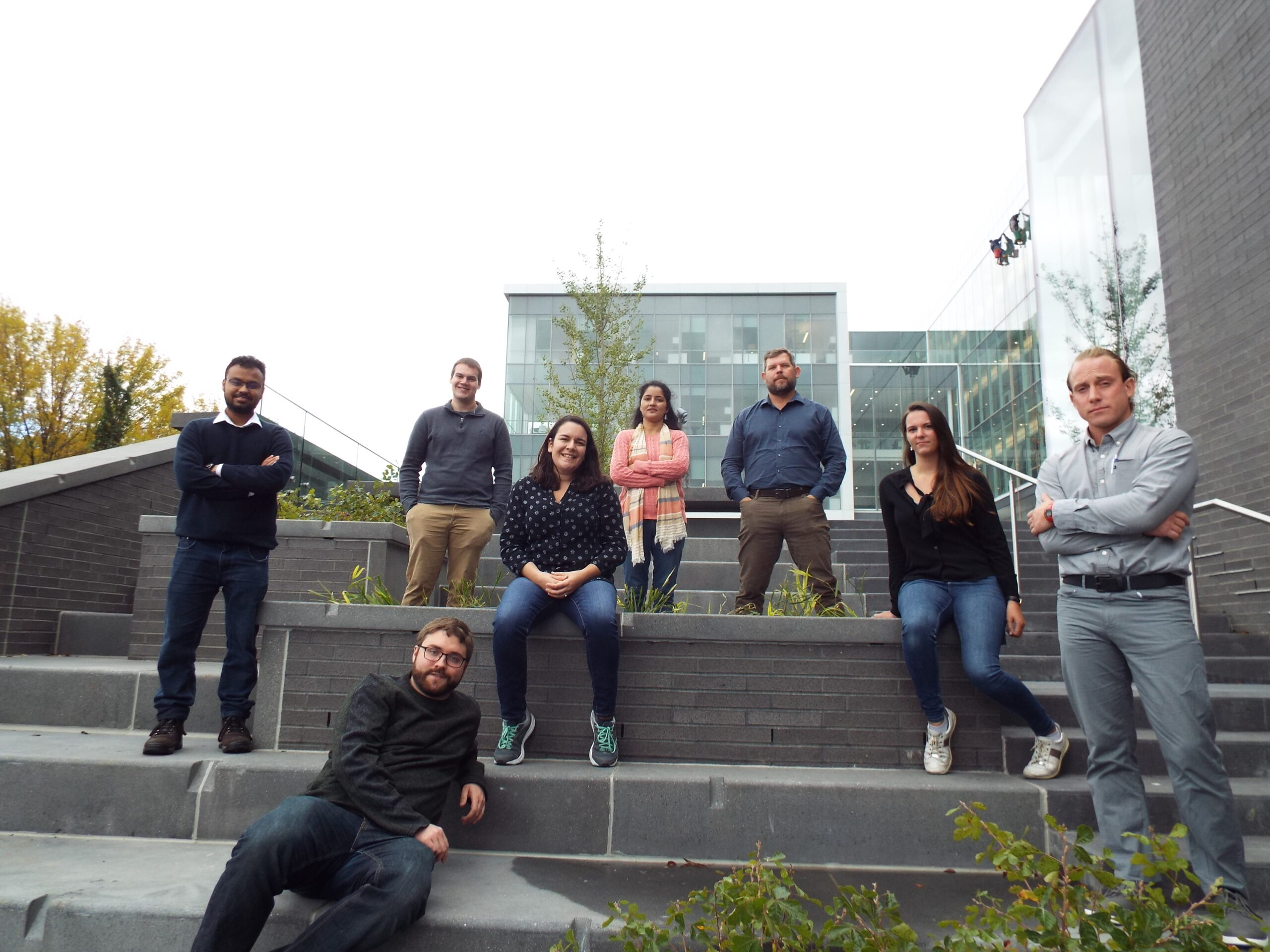The Bothun Lab Group is making innovations in the biomedical field with nanotherapeutic materials. PHOTO CREDIT: Contributed by Geoffrey Bothun
After joining the URI community in July 2006, Geoffrey Bothun, the chair of the chemical engineering department, created the Bothun Lab Group to make innovations in the biomedical field and environmental sensing.
The lab group takes on students and postdoctorates as researchers to help design nanotherapeutic materials or detect and remove harmful environmental pollutants including polyfluoroalkyl substances (PFAS).
“I think what we’re really motivated [by] is just how nature has evolved to use nanotechnology to create incredibly amazing beautiful complex things that we see every day,” Bothun said, “and trying to capitalize on some of those abilities.”
Over the past five to six years, Bothun has constructed a project to create multipurpose particles that can be used in different therapeutic applications. He considers the particle project to be their largest contribution to the biomedical field, as the particles can help kill cancer cells from the inside using infrared lasers.
“What we do is we use the inherent properties of these biological soft molecules in order to form different types of structures really as a template to organize magnetic nanoparticles, as a way to fabricate gold shells on the surface,” Bothun said. “Both of these materials hold a lot of promise for various therapeutic applications.”
Animesh Pan, a postdoctoral fellow at the Bothun Lab Group, explained that the lab works to design multifunctional nanoparticles to be implemented into various forms of therapy with efficacy.
“Suppose we are designing those materials for photothermal and photodynamic therapy,” Pan said. “We want to see that our design gives more efficacy [towards] hormone therapy and photodynamic therapy.”
Another lab focus is the detection and removal of PFAS chemicals, which can be found in cooking sprays, firefighting foams, drinking water supplies and the atmosphere.
Muzahidul Islam Anik, a fourth-year Ph.D. student studying chemical engineering, has worked on developing a system to help detect and remove PFAS chemicals from entering the human body through water and prevent the various harmful effects of the chemical on people.
“We are making a nanoparticle system, which is magnetic in the core and on the shell we have the gold and we are using some ligand to selectively catch the PFAS from water, and then using a static magnetic field to remove the particles from the solution, which eventually clears the water [of PFAS],” Anik said.
Eight universities collaborate on the environmental sensor creation study, which is set to finish in August 2022, according to Bothun.
Bothun has also served as the principal investigator and project director of the Rhode Island Consortium for Coastal Ecology Assessment, Innovation and Modeling. He has been doing this since the $19 million National Science Foundation grant started the Rhode Island Established Program to Stimulate Competitive Research program in September 2017.
“We’re trying to create nanostructured sensors for improved environmental detection of nitrates and phosphates because those are often abundant in our coastal waters, due to fertilizer runoff,” Bothun said.
Anik has also noticed how the lab communicates and publicizes research with many international reputable journals including the American Chemical Society and Chemosphere.
“Our lab group has been communicating with very good journals, and we have been publishing our work in those international journals,” Anik said, “and those are highly recognized and they’re heavily read throughout the scientific community.”
Bothun found that one project has helped form an understanding of how microplastics and nanoplastics on the ocean surface interact with nature and each other as the particles go through weathering conditions. Pan finds that Bothun always tells the lab to find a way to help the community.
“That’s the major role of our group and we specifically designed the project in a certain way that we could help in our community, ” Pan said.
Bothun hopes that the lab group continues to create innovations in biomedical technologies and environmental sensing in the long term.





